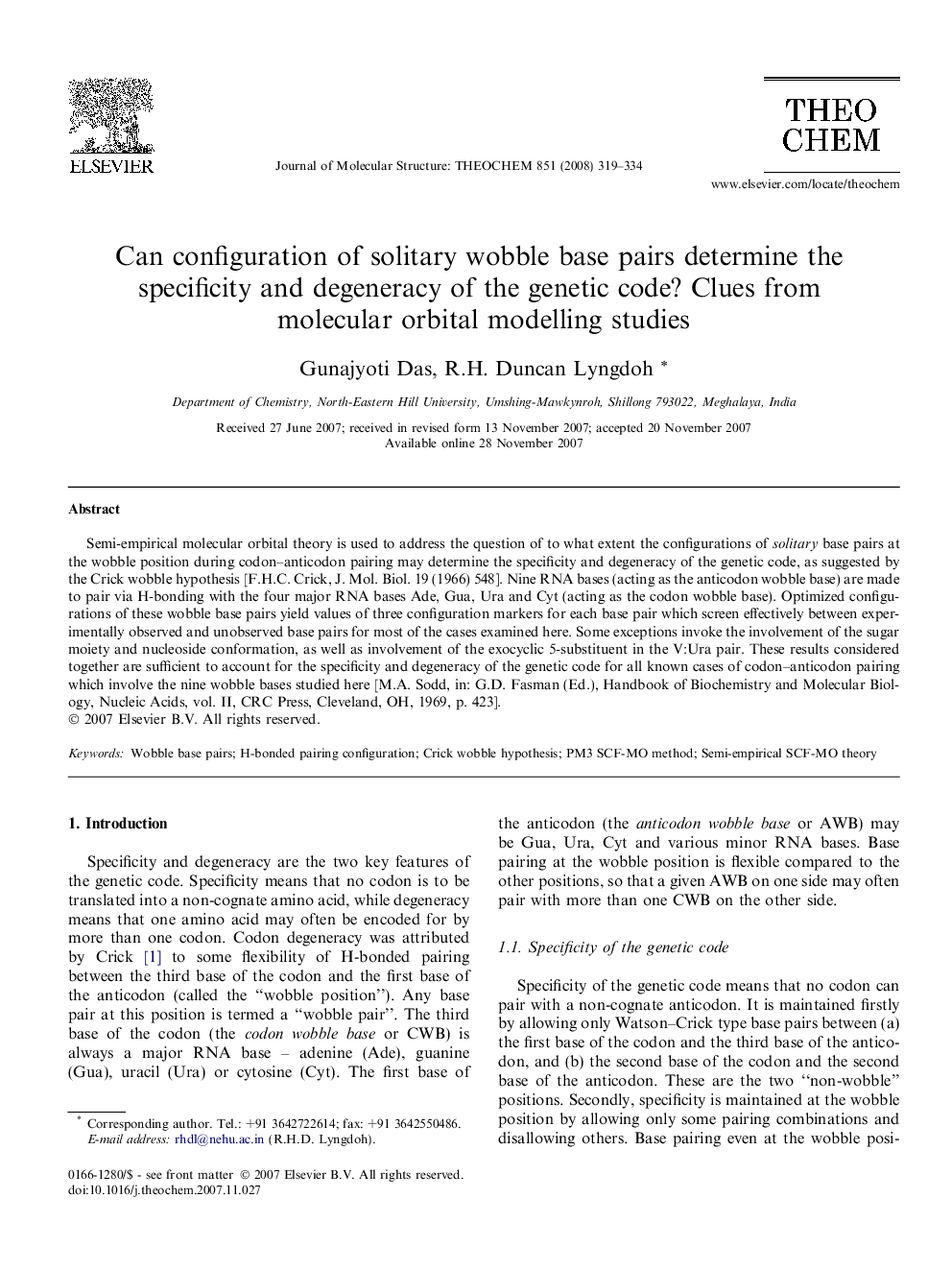| Article ID | Journal | Published Year | Pages | File Type |
|---|---|---|---|---|
| 5418523 | Journal of Molecular Structure: THEOCHEM | 2008 | 16 Pages |
Abstract
Semi-empirical molecular orbital theory is used to address the question of to what extent the configurations of solitary base pairs at the wobble position during codon-anticodon pairing may determine the specificity and degeneracy of the genetic code, as suggested by the Crick wobble hypothesis [F.H.C. Crick, J. Mol. Biol. 19 (1966) 548]. Nine RNA bases (acting as the anticodon wobble base) are made to pair via H-bonding with the four major RNA bases Ade, Gua, Ura and Cyt (acting as the codon wobble base). Optimized configurations of these wobble base pairs yield values of three configuration markers for each base pair which screen effectively between experimentally observed and unobserved base pairs for most of the cases examined here. Some exceptions invoke the involvement of the sugar moiety and nucleoside conformation, as well as involvement of the exocyclic 5-substituent in the V:Ura pair. These results considered together are sufficient to account for the specificity and degeneracy of the genetic code for all known cases of codon-anticodon pairing which involve the nine wobble bases studied here [M.A. Sodd, in: G.D. Fasman (Ed.), Handbook of Biochemistry and Molecular Biology, Nucleic Acids, vol. II, CRC Press, Cleveland, OH, 1969, p. 423].
Related Topics
Physical Sciences and Engineering
Chemistry
Physical and Theoretical Chemistry
Authors
Gunajyoti Das, R.H. Duncan Lyngdoh,
